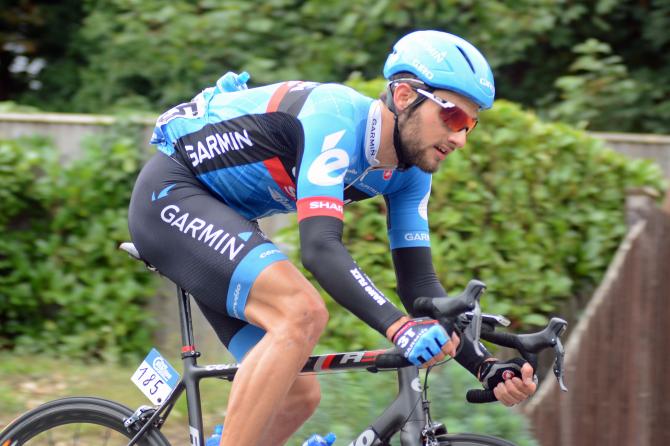Jacob Rathe Blog: Pedalling through sand for years
American undergoes surgery for iliac artery endofibrosis

I found myself in a glorious yet potentially embarrassing situation all of the sudden. I was in the 2013 Tour of Flanders and I made the breakaway. It’s a great place to be, a real opportunity to perform in one of the most spectacular and prestigious arenas in cycling.
For 80km the race was on full gas, the breakaway refusing to go. I magically slipped into the right group that got just enough of a gap. We rotated ruthlessly, desperate riders trying to bridge across from behind as we tried to open the gap to an insurmountable margin.
We escaped, and I was wishing we hadn't. I had to skip pulls, sitting at the back with my left leg in a cramping mess, barely able to stay with this goldmine of a group. I panicked for a few minutes, fighting every second to stay on the wheel. Getting dropped out of this group would be like a runner tripping on their shoelaces.
More than 500,000 spectators were watching on course and a few million more on TV. There are few worse places to fall on your face.
I didn’t get dropped, but it was one of the first of many times an episode like this would happen. I could ride hard for a few minutes, just long enough to establish an attack, only to be left grimacing and weak a few minutes later. My career as a pack-filler, 7th-place sprinter began.
The months leading up to this were a disaster. I crashed my second race day in a time trial, damaging my left quad badly. The day after that I caught the flu. Two weeks after that I broke my hand during the first day of Paris-Nice. Being a young and motivated 22-year-old, I trained with a broken hand like an idiot.
All of those injuries added to the confusion of cramping pain in my left leg. That is when this all started. In the two years following, I slowly went insane treating it with no lasting results. Starting with basic physical therapy, progressing to advanced PT, eventually buying textbooks and learning the ins and outs of compensation, stability, and our extensive network of facia.
The latest race content, interviews, features, reviews and expert buying guides, direct to your inbox!
I spent most of my time on the floor doing all sorts of things: glute bridges, single leg dead lifts, lateral strength, rotational stability exercises. This thing can be managed, sort of, to the point where it would only hurt if I actively participated in the race. No therapy and I was a mess just being pack fill.
I tried PT, then I tried it again from a different angle. I told myself that if I wasn’t fixed in 2015 I would quit. Easy. Finally, following another flare-up at the Redlands Bicycle Classic, I was diagnosed with Illiac Artery Endofribrosis. The condition occurs when the main artery feeding the leg constricts, restricting blood flow to the leg during intense efforts. The reduced blood flow can lead to a loss of power, fatigue, slow recovery from hard efforts and, in my case, pain. I recently underwent surgery with a specialist in San Diego to correct the problem, and I hope to be back competing again at the end of this year or the beginning of next season.
I’ve been entrenched in cycling all my life, however, never even thinking about an alternative. In this downward spiral I thought a lot about what I would do and that proved to be a great motivation for my cycling career. Listing the alternatives made me appreciate this sport more.
I have a get-out-of-jail-free card, a perfectly good reason to quit. But for now I won’t. Even after pedaling through sand for years I still want to line up for a bike race.
Twenty-four-year-old Jacob Rathe was recently diagnosed with Iliac Artery Endofibrosis after more than two years of struggling with cramping and pain in his left leg. The former Garmin-Sharp rider, who now competes for Jelly Belly-Maxxis, underwent surgery on June 27 to correct the problem, which has affected more and more professional cyclists such as Joe Dombrowski, Mike Friedman and Stuart O'Grady. Rathe will keep Cyclingnews readers updated on the progress and struggles of his recovery as he attempts to regain the form that led him to the WorldTour at 21 years old.
